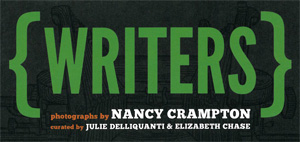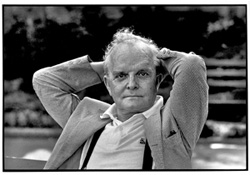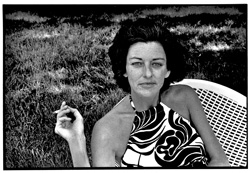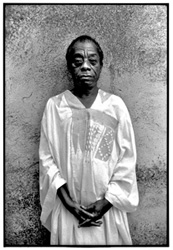 The Writers exhibition, on display in the Schatten Gallery until November, features photographer Nancy Crampton’s pictures of authors, poets, novelists, journalists and other writers. A small selection of MARBL materials, chosen by guest curators from the Emory community, complements each photo. The materials illuminate the connections the writers have with each other and the special collections in MARBL. The following is Goodrich C. White Professor of English, Ron Schuchard‘s essay about the exhibition and the importance of using primary sources.
The Writers exhibition, on display in the Schatten Gallery until November, features photographer Nancy Crampton’s pictures of authors, poets, novelists, journalists and other writers. A small selection of MARBL materials, chosen by guest curators from the Emory community, complements each photo. The materials illuminate the connections the writers have with each other and the special collections in MARBL. The following is Goodrich C. White Professor of English, Ron Schuchard‘s essay about the exhibition and the importance of using primary sources.

Truman Capote,
New York City, 1984
photo: Nancy Crampton
In 1979, with the support of the Woodruff gift, the cornerstone of the modern literature edifice in the Manuscript, Archives, and Rare Book Library (MARBL)—the W.B. Yeats collection—arrived at Emory from the library of his friend and patron, Lady Augusta Gregory. As a young nationalist poet, Yeats had himself proposed the creation of a “Library of Ireland,” which would distribute books by the best contemporary writers to Irish towns without libraries. The scheme included the revival of the oral tradition, by training reciters and players to go into the countryside and take serious literature to those who could not read but who would listen eagerly to the living voice. His aim was to create a “spiritual democracy” in which all members of the nation were able to share in its literature—poetry, plays, stories, myths, and legends—for he believed that universal accessibility to imaginative culture was essential to building a great nation and political democracy.

Anne Sexton,
Weston, MA, 1973
photo: Nancy Crampton
Thus, from the time that MARBL received the Yeats collection and began to build a major literary archive, a page was taken from his library scheme: its treasures would never be the exclusive preserve of elite scholars and postgraduates; they were to be materials for teaching as much as for research, for imaginative inspiration as much as for monographs. For the past thirty-three years undergraduate classes have been welcomed early to the feast of seeing and handling original manuscripts, notebooks, letters, and other documents of the creative process—and afterwards individual students have been welcome to use the archives for class papers, honors theses, conference presentations, and self-curated course exhibitions. Their ability to share in the imaginative culture of MARBL has led to scores of major fellowships, awards, and internships; it has been essential to building a destination university in the humanities.

James Baldwin,
St. Paul-de-Vence, France, 1986
photo: Nancy Crampton
The present exhibition, WRITERS, is perhaps the finest manifestation to date of the spiritual democracy that MARBL has created for students and citizens of literature in the state, nation, and world. Its selectors include high school Advanced Placement literature students; Emory undergraduates, graduates, faculty, and administrators; library staff; and the organizer of the Decatur Book Festival. They have pulled works by American, African American, English, Irish, Caribbean, and Indian authors; they have drawn upon the Edelstein collection of American poetry, the Raymond Danowski Poetry Library, the Camille Billops and James V. Hatch archives, the Michel Fabre archives of African American arts and letters, and the single-author collections of Seamus Heaney, Ted Hughes, Salman Rushdie, and Robert Penn Warren, among others; they have chosen a fascinating cross-section of archival items that have struck their individual imaginations, including manuscripts, typescripts, children’s books, inscribed books and pamphlets, broadsides, posters, fliers, letters, lectures and addresses, photographs, and audio recordings—all part of the primary and secondary matter, the ephemera and the detritus, of distinguished creative lives, preserved in the MARBL domain for communal delight, awe, and use. Welcome to a unique exhibition chosen by all-age lovers of writers and their writings.
